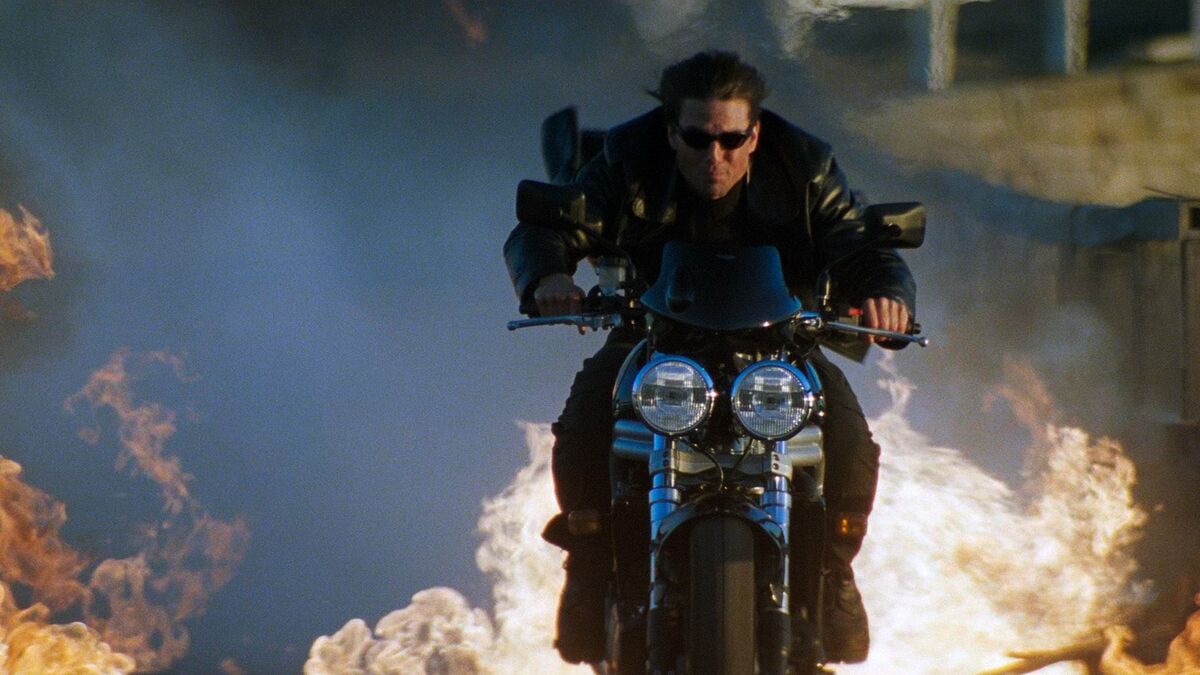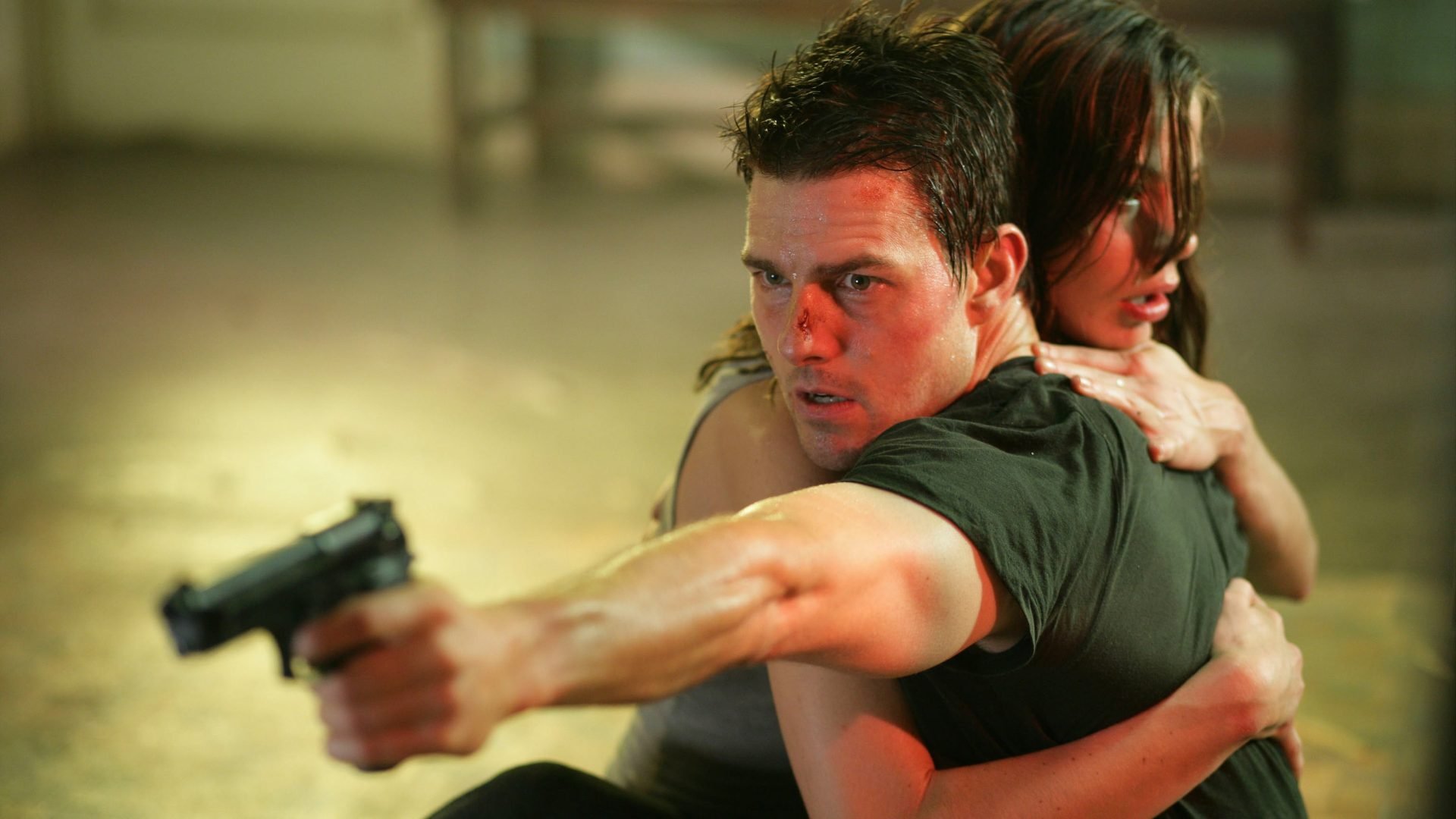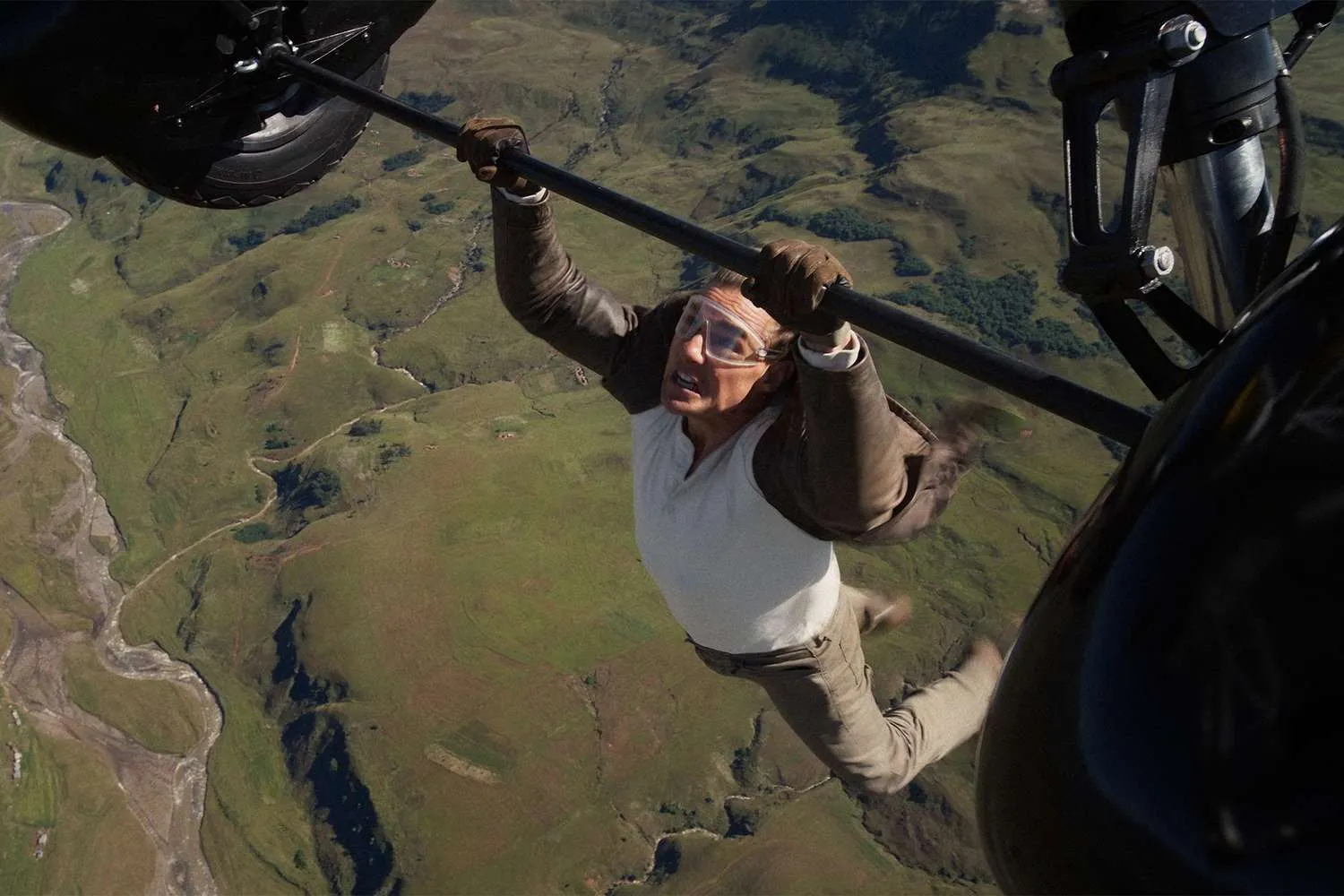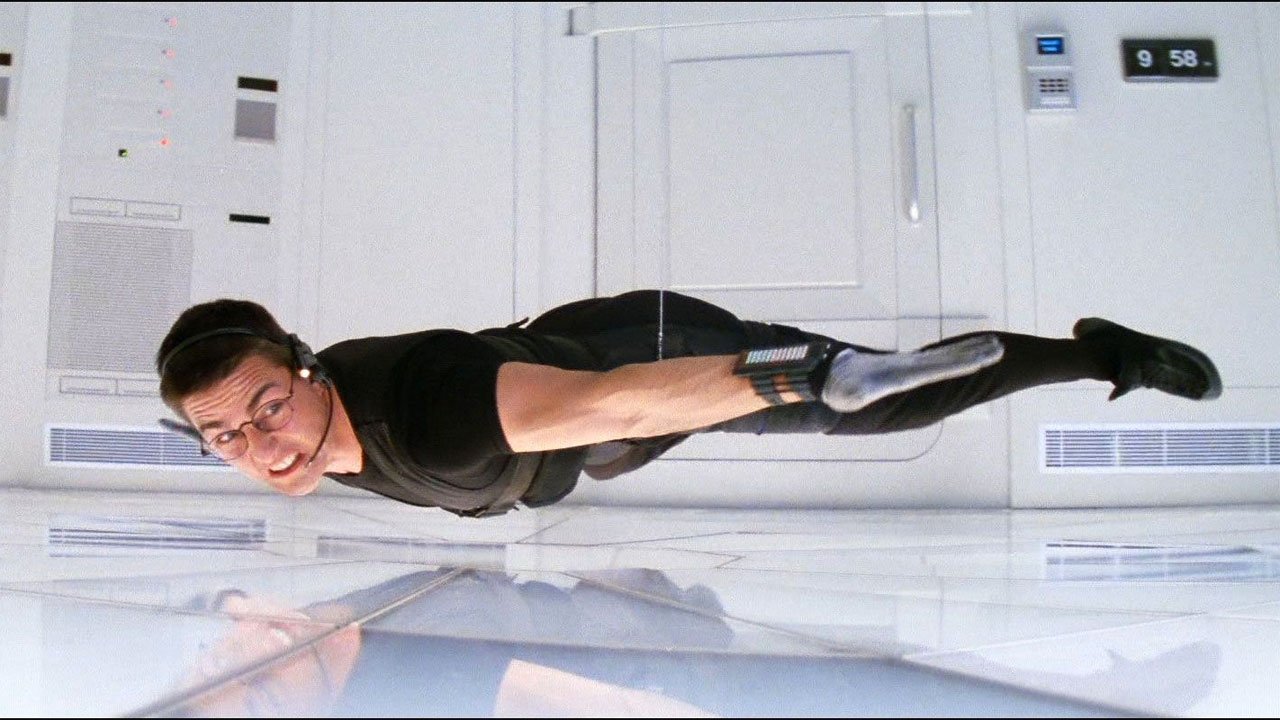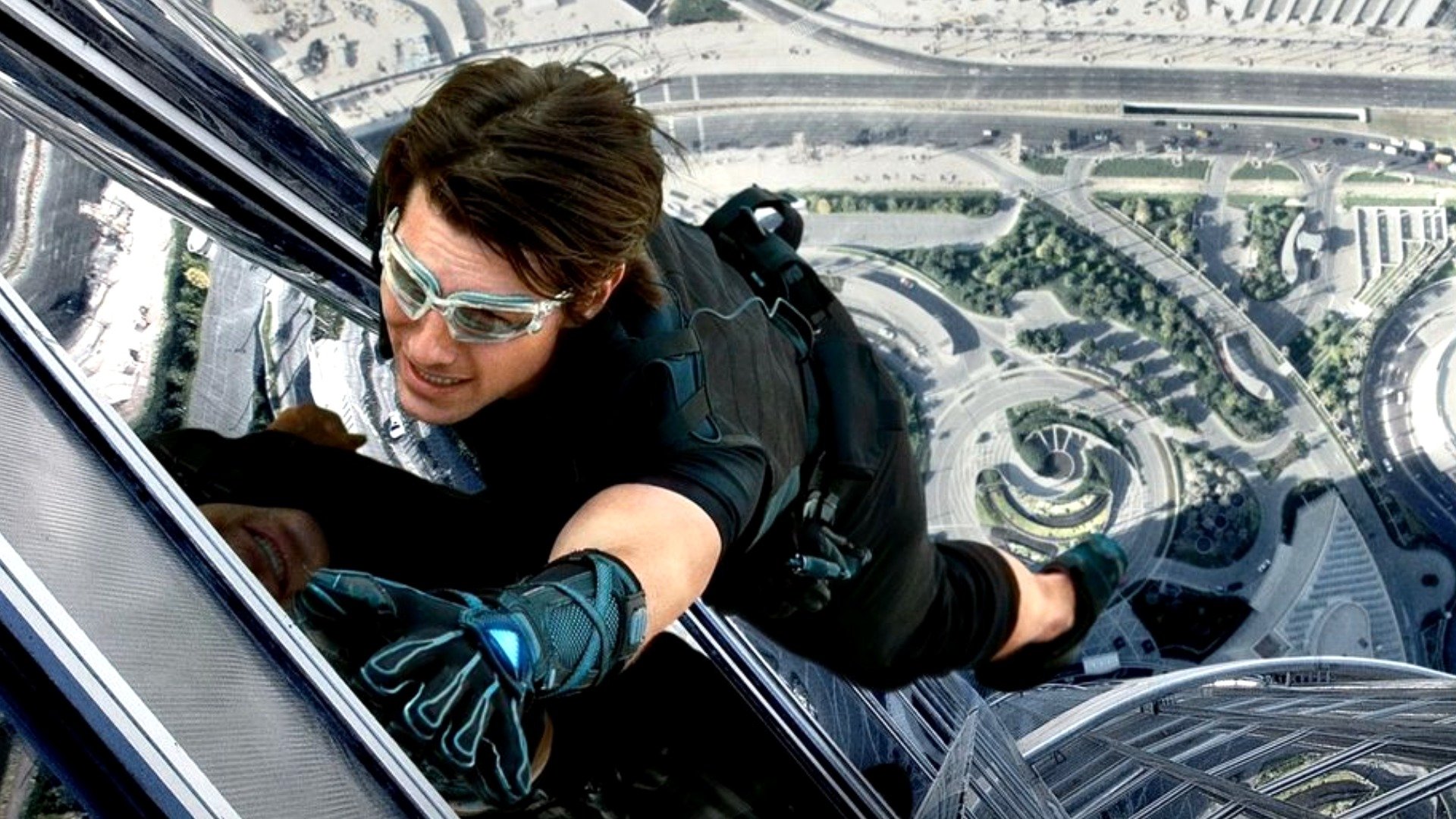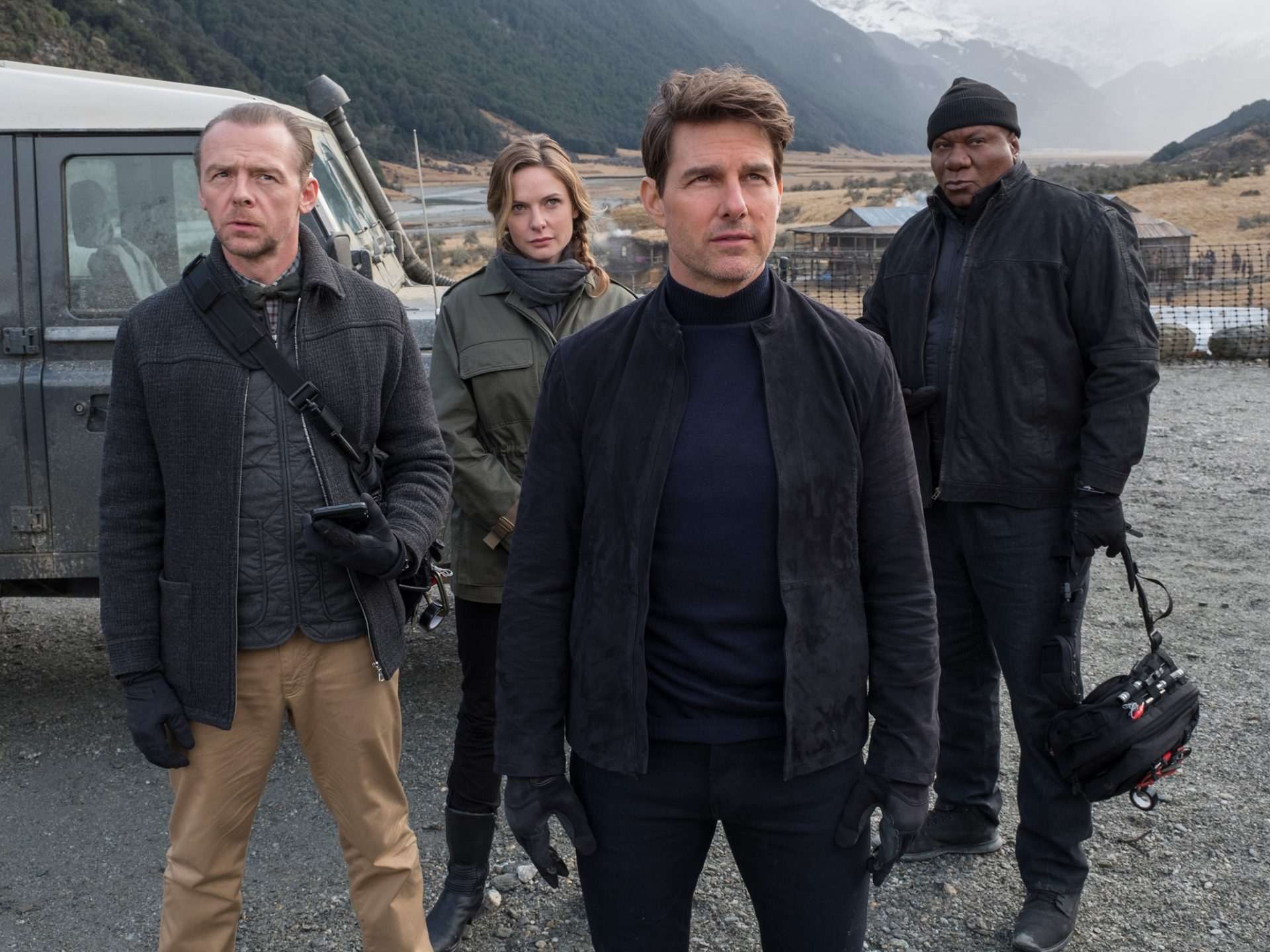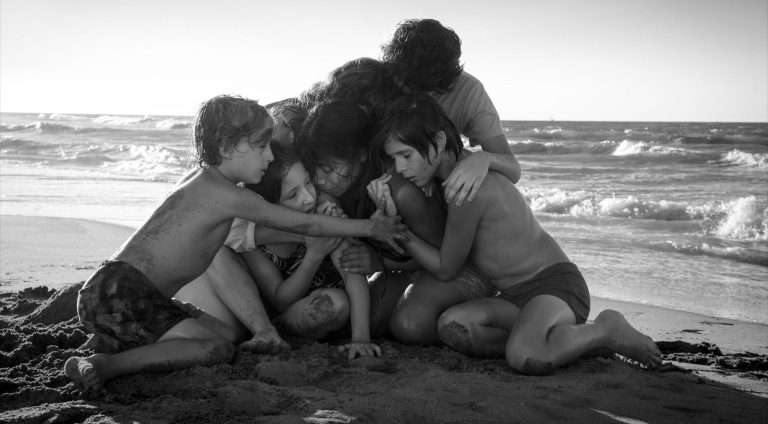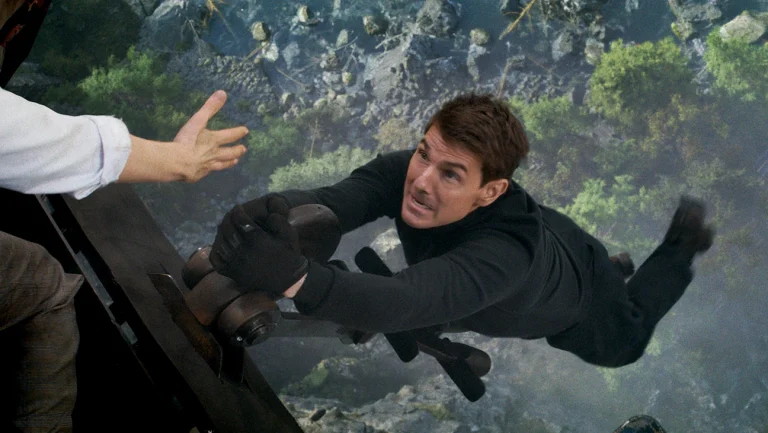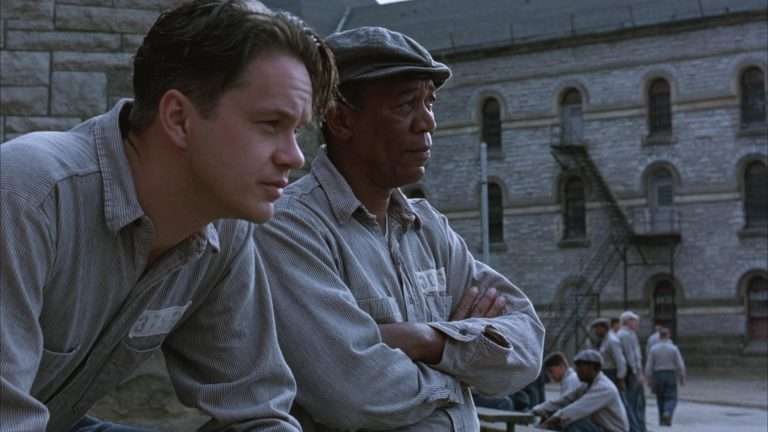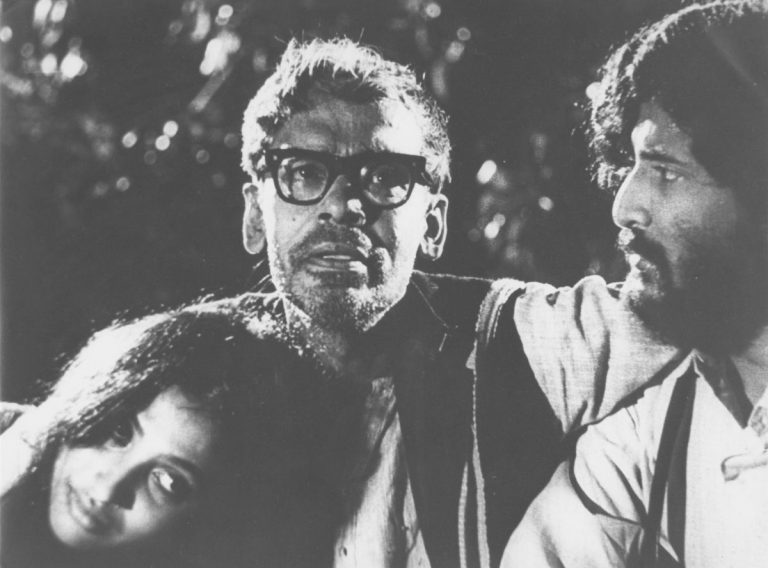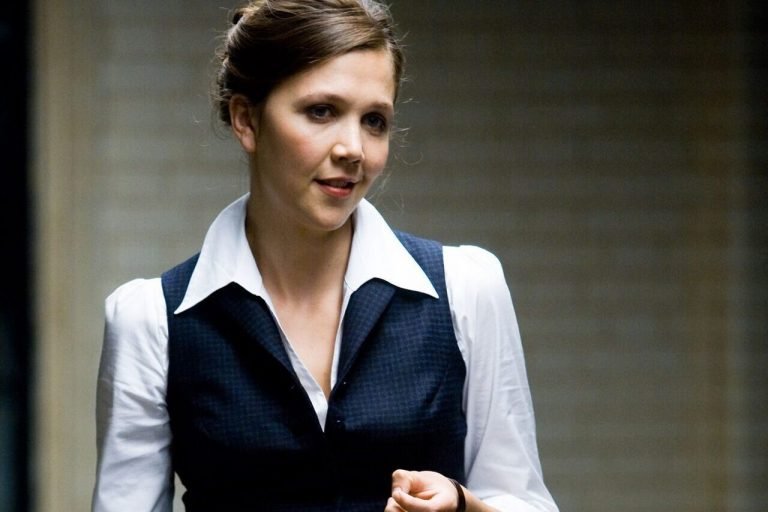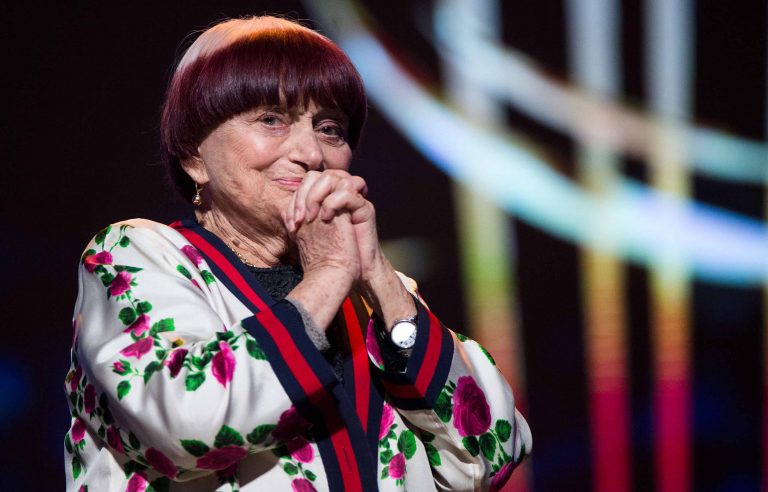The Mission: Impossible franchise is a remarkable film series that has garnered a significant following over the years. Tom Cruise’s involvement in the films has undoubtedly been a key factor in their success. This franchise stands out for its action-packed scenes, clever plot twists, and remarkable stunts that keep audiences on the edge of their seats. Let’s say it’s not just another action movie series. No, no, no. This is Tom Cruise we’re talking about, the man who lives for adrenaline-fueled stunts and pushing the limits of what’s humanly possible.
From hanging off the side of the world’s tallest building in Dubai to clinging onto the side of a cargo plane as it takes off, Tom Cruise has done it all. And we, as the audience, get to witness it firsthand in the Mission: Impossible movies. It’s like watching a real-life superhero in action.
But it’s not just about the stunts and action sequences. The storylines are always top-notch, with intricate plot twists and turns that keep you on the edge of your seat. And who can forget the iconic theme song? That alone is enough to get your heart racing.
What sets the Mission: Impossible franchise apart is Tom Cruise’s dedication to his craft. He doesn’t rely on stunt doubles or CGI to pull off the insane stunts we see on screen. No, he does it all himself. And you can see the passion and commitment in every scene. His physical prowess and impeccable acting skills have enabled him to create a character that viewers have grown to love over the years. And let’s be honest, who doesn’t love a good spy movie? The espionage, the gadgets, the double-crossing… It’s all so thrilling. And when you add Tom Cruise into the mix, it’s like the perfect recipe for an action-packed blockbuster.
It’s the ultimate cinematic thrill ride that keeps us coming back for more. The Mission: Impossible franchise has been fortunate to have some of the best creative brains in the industry at the helm of these films. JJ Abrams, Brian De Palma, and Brad Bird are big-shot names with stellar reputations. All the films in the series have intricate plots that are frequently intertwined, making the viewing experience more immersive and engaging. The franchise has balanced heart-stopping action scenes and compelling storytelling, providing a well-rounded entertainment experience to its viewers.
Furthermore, the franchise has managed to stay relevant by consistently delivering fresh, exciting content in each new installment for the last 30 years, from 1996 to 2025. You always get to experience some new form of madness with a Mission: Impossible film. So, here is our ranking of all the movies in the Mission: Impossible franchise. At the outset, this piece seems like a “mission impossible.” But catch us making it “mission very much possible” below (*wink*).
8. Mission: Impossible II (2000)
Admittedly, it is difficult to believe that Mission: Impossible II is actually a part of the franchise. Watching the film brings out many frailties in the Mission: Impossible success formula at the time when they were still evolving and unpolished. John Woo makes some hardened choices to leave his signature hallmark to Part 2, like slow-mo, dual-wielding guns, and cringeworthy standoffs. His depiction of the tale and visual chemistry are mediocre, undermining the franchise’s current high-quality prowess. The plot of the film is unconvincing, to begin with, but Woo does not do it any favors with his substandard treatment.
Cruise quickly realized his pony was a failed experiment, so he was turning the original theme song into a Hans Zimmer disaster. There is something you do not often say, but Zimmer’s interference did not produce a masterpiece this time. Nyah Hall comes across as more of a Bond girl than a team strategist. It could be because of Cruise’s image as a performer and his age at the time. But it was clearly the wrong choice. It is also the only movie in the franchise not to feature any clever spy set pieces or complex action scenes, which are a hallmark of the Mission: Impossible franchise.
7. Mission: Impossible III (2006)
The most memorable takeaway from JJ Abrams’ helmed Part 3 is the handheld camera, which provided a sense of induced claustrophobic urgency. Abrams enhances this by introducing conflicts in each scene, stacking one upon the other, while also using his traditional shaky cameras and lens flares. His budget-constrained filmmaking, when there is little of such, is a hindrance. He instead chooses to focus on faces with close-ups and zooms rather than utilise wider coverage. The choppy editing feels like an intrusion. The production design is great, and the highway attack is spectacular. That is Abrams trying to evoke his inner Michael Bay. He doesn’t get there because the choppier camera work and slow motion juxtaposition are not the balletic interplay Abrams is used to, and thus it never completely becomes what he envisions it to be.
One wouldn’t be far off the mark if it’s said that Davian remains the most potent and believable antagonist in the Mission: Impossible series. His cold-hearted tenor and derisive charm helped Abrams ground Davian in a realistic mobster mentality. There is also an ample amount of time dedicated to the banter and friendship between Hunt and Rhames’ Luther, highlighting the history between them throughout the three films. And of course, this film introduces Benji Dunn, played by Simon Pegg, whose interactions with Ethan Hunt in one scene with the famous Tom Cruise run are one of the more memorable moments in this mostly forgettable film.
The film introduces a more personal storyline for Ethan Hunt by exploring his romantic relationship with Julia (Michelle Monaghan) and his desire to leave the dangerous life of being a spy. This emotional depth adds a new dimension to the character, but does risks saddling the overall franchise as a whole. One could credit the tiptoeing and finally conclusively dealing with that arc to McQuarrie.
The climax of the film, in which Ethan must make a difficult choice in order to save his team and the world, is impactful, as is the achronological plotting. But that latter is a trademark of Abrams’ mystery box overuse, which provides a dopamine rush in immediacy, not in the long run.
6. Mission: Impossible – The Final Reckoning (2025)
This entry has a “Spectre” problem. McQuarrie and Cruise’s attempts to streamline and create a coherent narrative out of a 30-year-old franchise to make sense expansively would also mean trying to rein in the weird stepchildren of the franchise by providing answers for them. As a result, an expansive finale for the overall franchise and a conclusive two-parter whereby Ethan Hunt could feasibly battle the only enemy from a prescient and narrative perspective—artificial intelligence—”The Final Reckoning” buckles under its ambition and callbacks.
However, there is no “bad” MI entry, which is doubly true of the McQuarrie and Cruise partnership. But this feels the messiest because the seams and the effort are evident. It works, however, because of the exactitude of crafting the highs, the scrumptious design of the set pieces (the submarine action set piece is especially extraordinary), and the emotional connective tissues due to following the franchise for thirty years. More importantly, the mission statement for Tom Cruise—to bring back the movie-watching experience—still holds water. It has only two major set-pieces, but those two, and Tom Cruise’s extraordinary dedication in stunt-work, more than make up for eliciting a dopamine high.
5. Mission: Impossible (1996)
Palma’s carefully crafted noir language in this one is in contrast to the other, more action-filled films in the franchise. While the quiet, cryptic buildup is self-aware and purposeful, it is deprived of the visual spectacle we have come to expect from Mission: Impossible. The lack of visual nuance is another drawback in the film’s journey. While it is excusable to some extent, given the times it was made, some more effort couldn’t have gone wrong. The final scene on the train felt anticlimactic, given its importance as the crucial third act.
The movie was instantly impressive with its fresh ideas and characterization of the spy genre. Many saw it as taking the James Bond success formula and superimposing an American, Hollywood-style spectacle on it. The special effects and CGI left a lot to be desired, although one can understand considering the technology of its era. De Palma’s ideology for explosive action films was in sync with what Cruise and Wagner (the other producer) wanted to achieve. The first is always the most special, and that is where Mission: Impossible is still endearing.
4. Mission: Impossible – Dead Reckoning (2023)
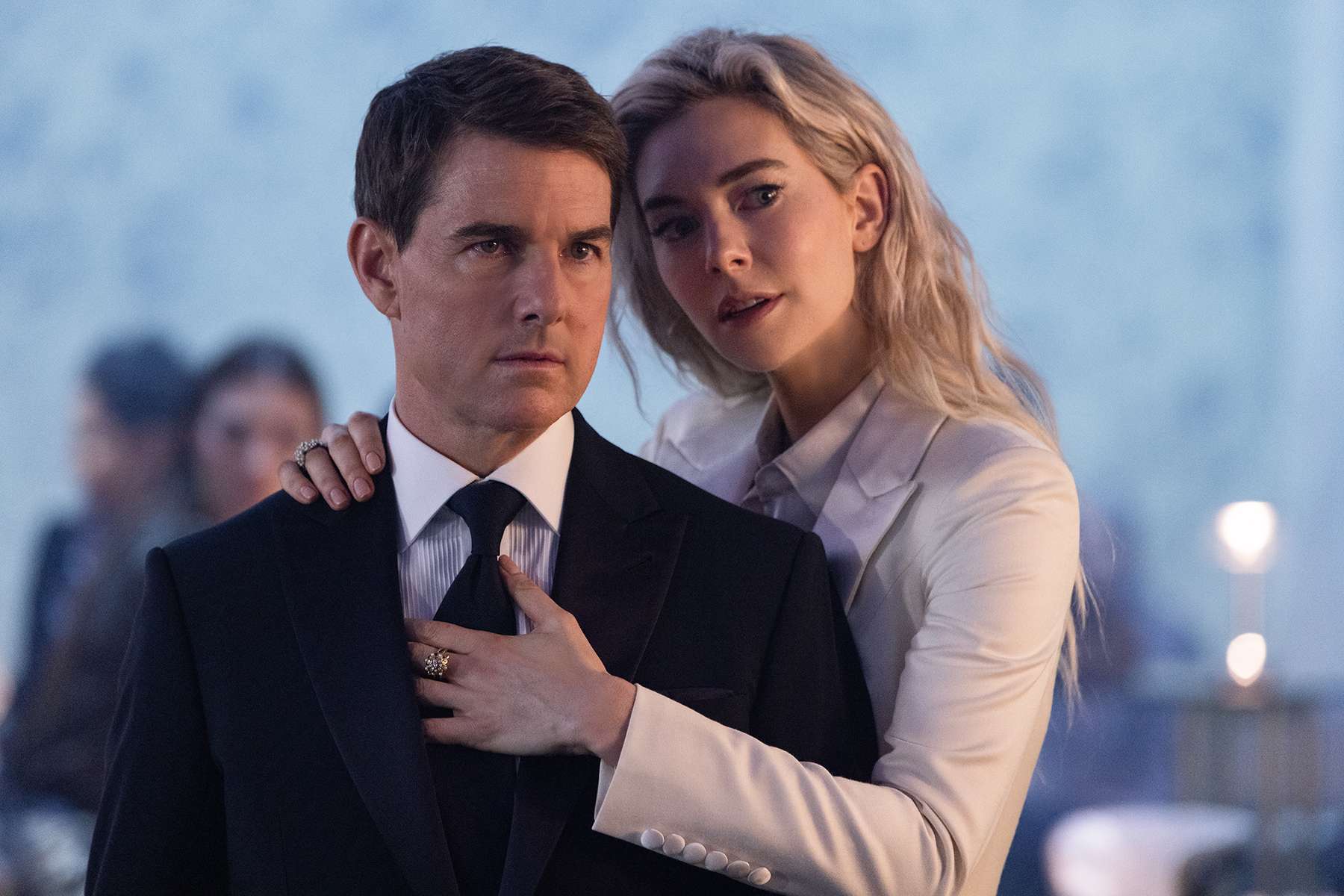
The discourse surrounding movie theaters’ vitality and mainstream entertainment’s credibility has recently intensified. Last summer, Tom Cruise exemplified their symbiotic relationship with the success of “Top Gun: Maverick.” His age-defying presence in the “Mission: Impossible” franchise, spanning 27 years, has been a key factor in its enduring popularity. The franchise continually raises the bar in terms of spectacle and action, with Cruise’s insistence on performing daring stunts himself becoming an integral part of its marketing.
In “Dead Reckoning Part One,” the villain takes the form of an all-powerful algorithm, pitting it against Cruise’s character, Ethan Hunt. As an old nemesis resurfaces, Hunt must decide between his mission and loyalty to his friends. The film masterfully balances emotional depth with exhilarating set pieces, solidifying Cruise’s status as a last-of-his-kind superstar. With its compelling storytelling and breathtaking action, the franchise could solidify its place as one of the best in film history, further cementing Cruise as Hollywood’s savior.
3. Mission: Impossible – Ghost Protocol (2011)
Ghost Protocol is arguably the first “global” film in the Mission Impossible franchise. Previously, all the films were limited to a few settings, mainly within the US. But Ghost Protocol took the franchise imprint to another level. Budapest, Moscow, Mumbai, Dubai, and Paris; seem like our fantasy travel bucket list. It is pretty remarkable that even with that kind of traveling around, it is not the most expensive film in the franchise. The film saw the introduction of Jeremy Renner as Agent Brandt. Cruise and his team faced the prospect of being disavowed for eternity as a nuclear war threat scaled up. It creeps closer to manifesting physically, as a fanatical Russian scientist envisages the end of the world.
Director Brad Bird uniquely positions Ghost Protocol with relentless pacing. We just don’t stand still and wait for the narrative to take shape. Due to the immediacy of their severe predicament, Cruise and his team are forced to seize the situation by the scruff of the neck. Like all other films, Ghost Procol has some awe-inspiring action set pieces. The strangely titillating spy gadgets like the one Benji and Ethan use in the Kremlin keep up the excitement.
Cruise’s Burj Khalifa selfie launched Ghost Protocol into mass fame – as if it needed anymore. His iconic sequence in the film itself was a pivotal moment in the franchise – anything is possible if you have an open mind.
2. Mission: Impossible – Fallout (2018)
We have talked too much about the “bathroom scene” to let it alone define Fallout. The sixth film in the franchise is impressive because it successfully integrates the franchise’s best elements while also developing new inventions that keep the audience hooked. The film features breathtaking action sequences, high-stakes tension, and an intricate plot that keeps the viewers engaged from start to finish.
One of the film’s key strengths is its ability to seamlessly integrate classic Mission Impossible elements, such as Ethan Hunt’s use of disguise, gadgets, and high-stakes missions. The film also includes some familiar faces from the franchise, such as Simon Pegg’s character Benji and Ving Rhames’ character Luther, who add a touch of familiarity and comfort to the audience.
However, Fallout also introduces new elements to the franchise, such as a more menacing tone to the storytelling and uncertainty if our characters will successfully make it out. Additionally, the film’s action sequences are some of the most inventive and well-choreographed in the franchise, such as the motorcycle chase through the streets of Morocco and the tense underwater sequence.
Furthermore, the film’s villain, John Lark, played by Henry Cavill, is a formidable foe who poses a genuine threat to Ethan Hunt and the IMF team. Cavill’s understated and chilling performance elevates the character beyond the typical one-dimensional villain seen in many action films.
1. Mission: Impossible – Rogue Nation (2015)
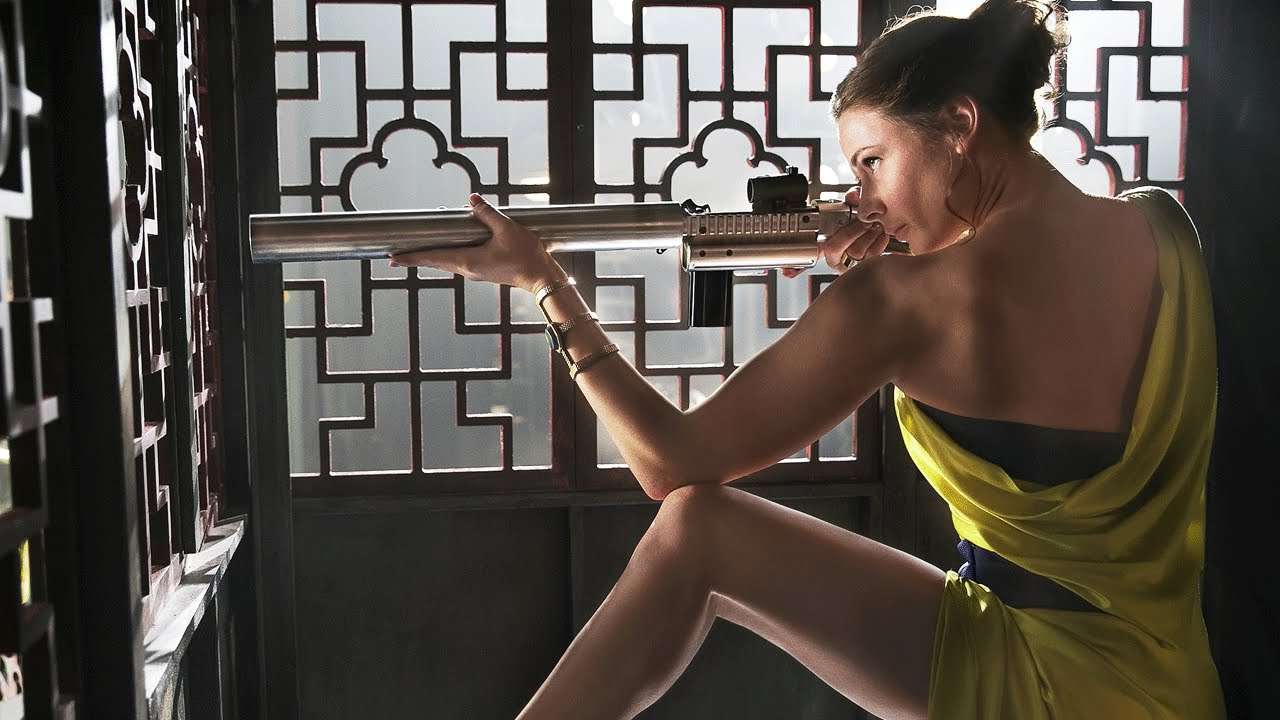
Rogue Nation keeps you on the edge of your seat with its non-stop, high-octane sequences. The film, directed by Christopher McQuarrie, has an intelligent plot and complex characters that elevate it above the standard action fare. It is no wonder that McQuarrie has been tasked with concluding the franchise with the two parts of MI: Dead Reckoning. His polished understanding of blocking and framing came in very handy in Rogue Nation.
Many sequences here would feature in the list of the best action sequences of the franchise. One of the standout features of the film is its gripping opening sequence, in which Ethan Hunt is seen hanging onto the side of a military cargo plane as it takes off. This jaw-dropping stunt was done for real by Cruise himself, without the use of CGI, making it one of the most impressive practical stunts in recent memory.
Another moment of brilliance is the car and motorcycle chase through the streets of Casablanca, which features stunning cinematography and impeccable stunt choreography. The scene also highlights the strengths of the supporting cast, as Benji (Simon Pegg) takes the wheel and proves to be a valuable asset to the team.
The opera scene is another standout moment in the film, in which the action takes a backseat to tension and suspense. The scene plays out like a heist movie, as Hunt and his team try to stop an assassination in progress. The music of Puccini’s Turandot adds to the operatic grandeur of the scene, and the intricate planning and execution make it a standout moment in the film.
Rebecca Ferguson is an impressive addition to the cast. She appeared quite at ease and natural in the role of the double spy caught up in her revelry. Simon Pegg took on a more active role in the film, continuing his successful stint in Ghost Protocol. Rogue Nation showed how the MI franchise has matured over the years and successfully refined its unique elements of the spy-action genre. In our “reckoning,” Rogue Nation is the best film in the Mission: Impossible franchise.

